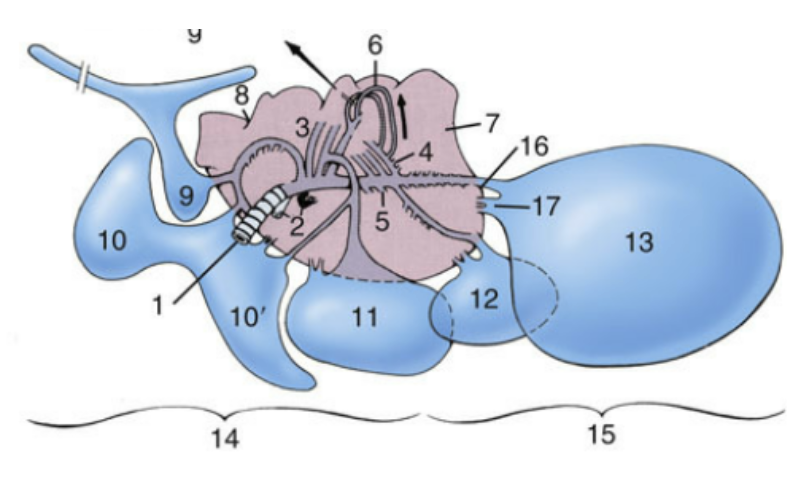ANFS 240 Avian Respiratory (Exam 3)
1/10
There's no tags or description
Looks like no tags are added yet.
Name | Mastery | Learn | Test | Matching | Spaced |
|---|
No study sessions yet.
11 Terms
Avian Respiratory System
Very different from the mammalian respiratory system
Important to understand because poultry kept in production systems are particularly susceptible to respiratory diseases
Breathe very differently than mammals
Nostrils (nares)
At the base of the beak
• Opening to the nasal cavity
• Septum on median plane
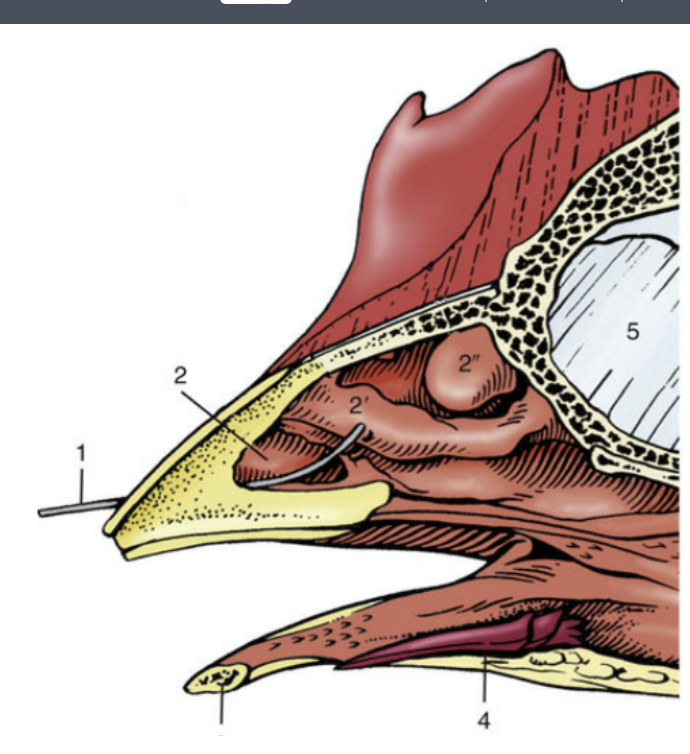
Conchae
Contained by nasal cavity
• Important for olfaction (sense of smell), filtering out pollutants, and thermoregulation, much like the mammalian conchae
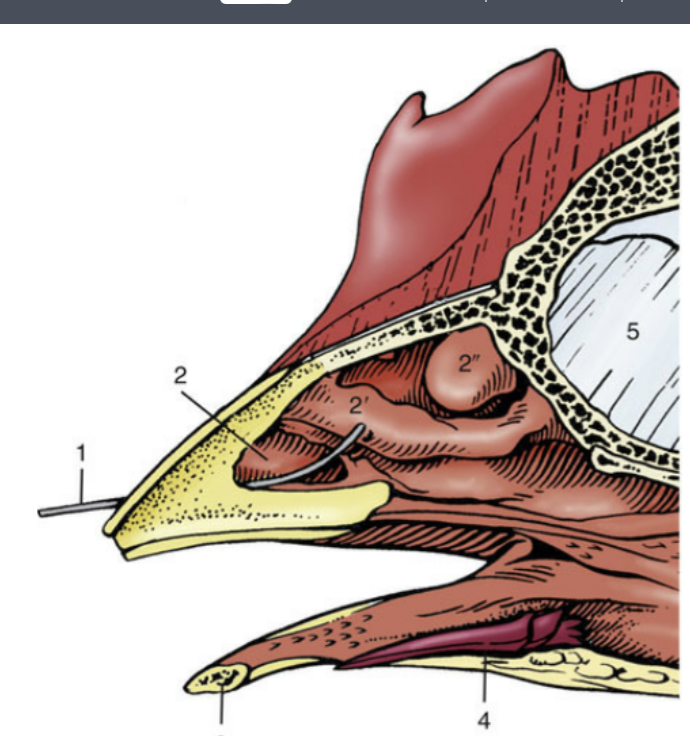
Nasal gland (“salt gland”)
Within the nasal cavity
• Secretes salt in marine species, allowing them to drink seawater
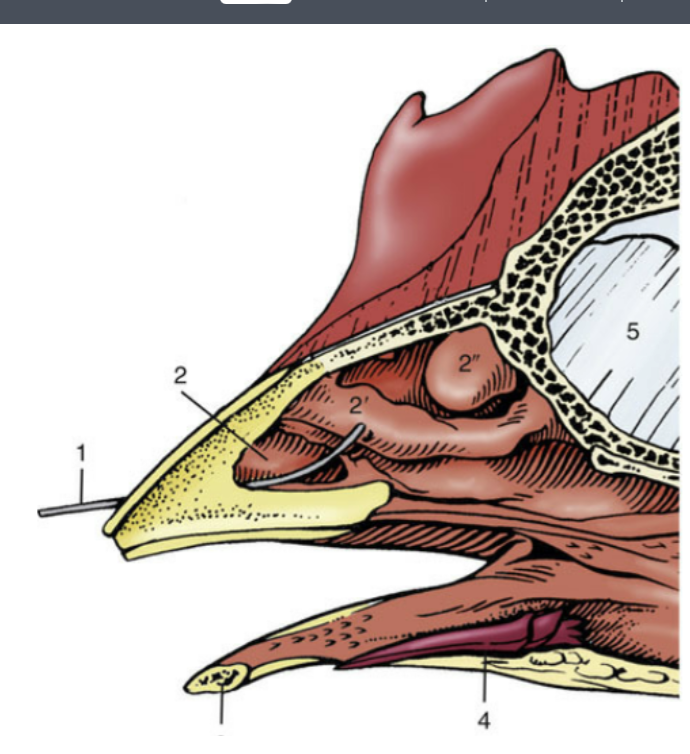
Larynx
Made of only arytenoid and cricoid cartilage
• Arytenoid cartilage closes the glottis – no epiglottis
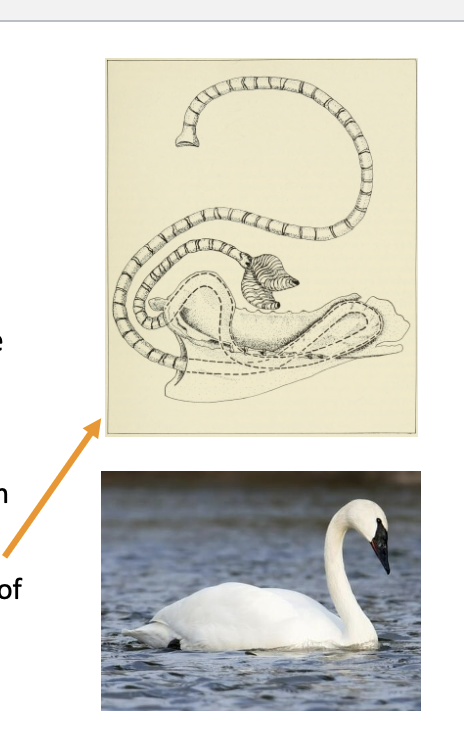
Trachea
Tightly stacked, overlapping, complete cartilaginous rings
Mostly on the right side, close to the esophagus which runs on the right
Longer than the actual neck in long-necked species (swans, etc) & loops around within a specialized area of the sternum
Trachea bifurcates into two bronchi, like mammals
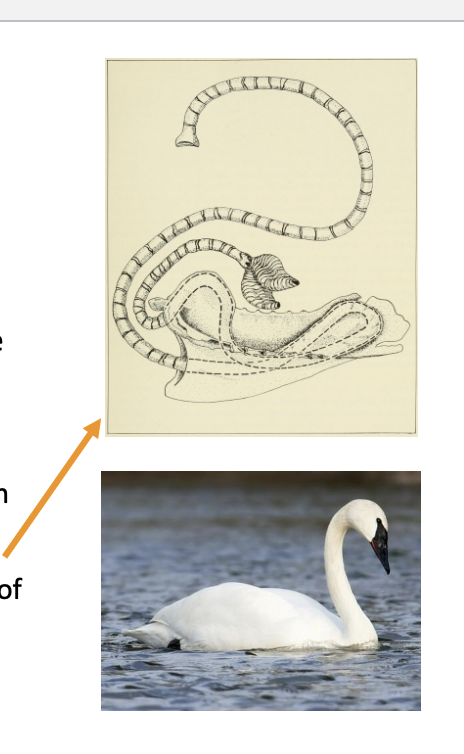
Syrinx
No vocal folds in the larynx – all vocalization occurs in the Syrinx
Terminal part of the trachea + first parts of the primary bronchi
Initial parts of the bronchi are membranous (no cartilage), and will make sound when they vibrate
Certain species, like songbirds, have more intricate syringeal musculature
Parrots actually have very few syringeal muscles, compared to songbirds
Common location for foreign body obstruction
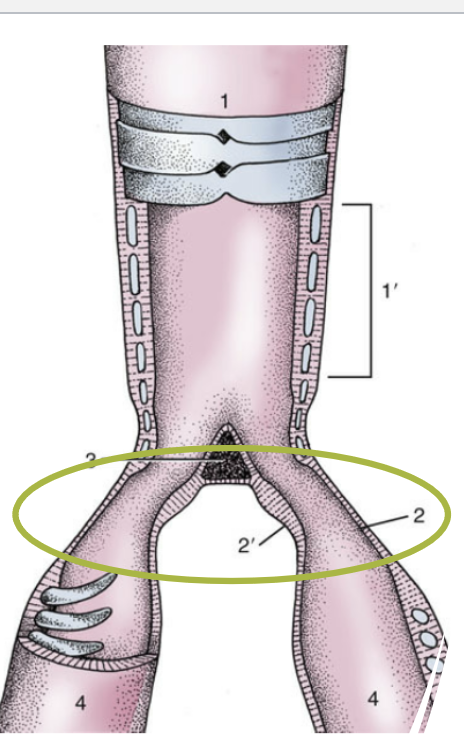
Avian Bronchi and Lungs
Lungs: Very small, not lobed
Do not expand like mammalian lungs
Exist in the craniodorsal part of the body cavity (not lateral) & are loosely attached to the body wall (not free)
Primary bronchi give rise to 40-50 secondary bronchi
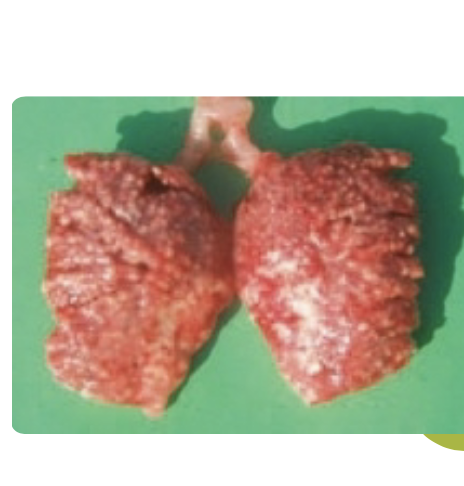
Parabronchi
Secondary bronchi (3,4,5) give rise to 400-500 parabronchi (6)
Loops that connect the bronchi
Medioventral/mediodorsal region – paleopulmonic region
Tightly packed parabronchi loops
Lateroventral/laterodorsal region – neopulmonic region
Less regular arrangement of loops
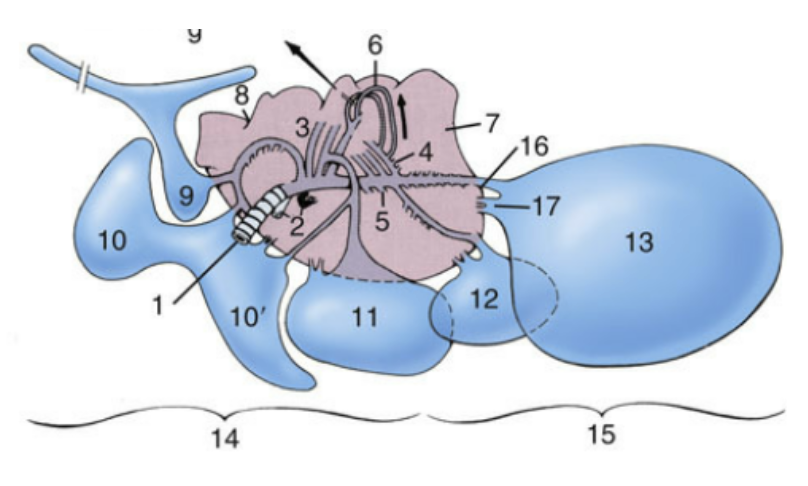
Paleopulmonic Region
Medioventral/mediodorsal region
Tightly packed parabronchi loops
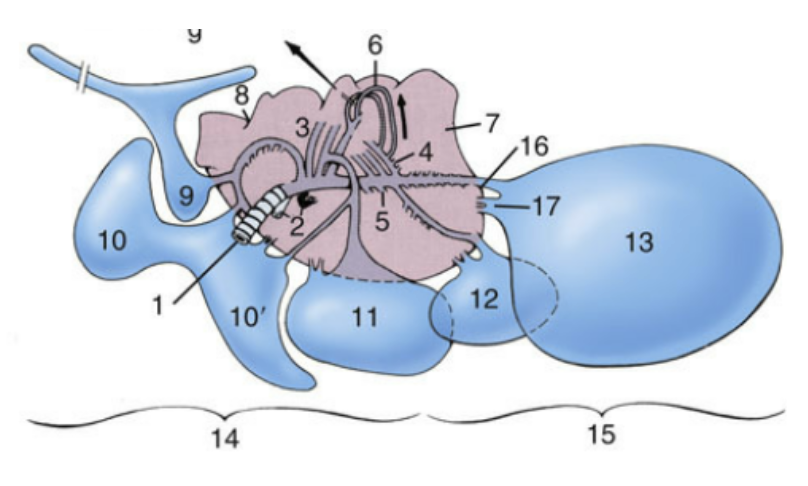
Neopulmonic region
Lateroventral/laterodorsal region
Less regular arrangement of loops
